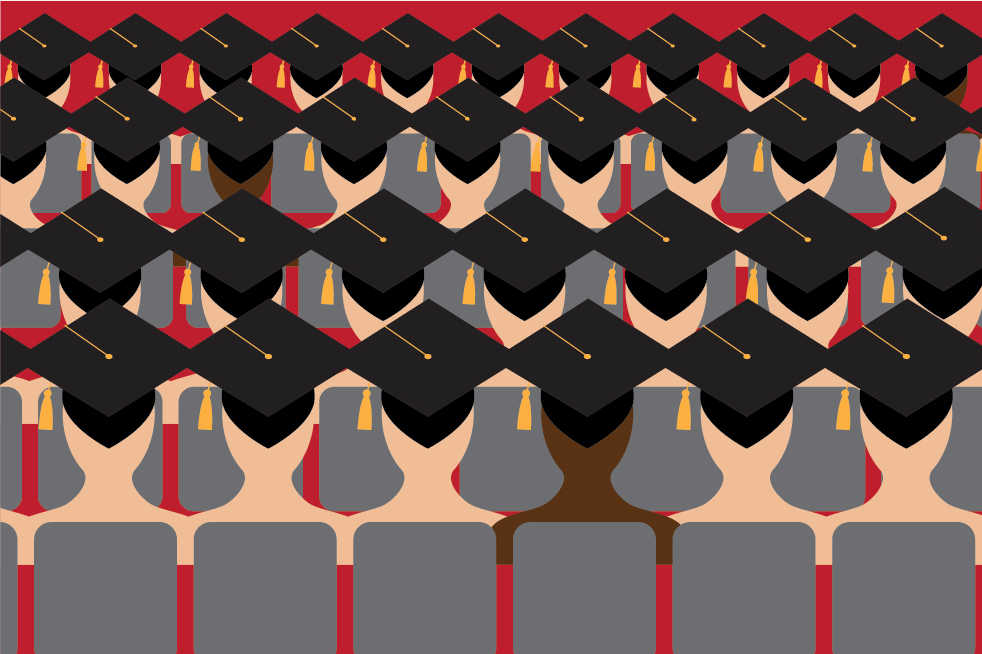Diversity: the word has become extremely common. It has become defined as a goal, a state of being, which institutions aspire to achieve in the composition of their population. Diversity is a medal, which can be worn to showcase their cosmopolitan nature. Colleges want to be diverse, in this case, racially diverse. It begs the question: Why?
Promoting diversity can give opportunities to members of race groups who have been historically oppressed or are currently economically disadvantaged. It means representation for peoples whose voices have been stifled for generations. It means a youth breaking out of the cycle of poverty. It means more than granting opportunity; it means granting rights.
In the American university system, racial diversity has been championed by the policy of Affirmative Action. This policy is an essential part of the admissions process at many universities across the nation.
Tech’s admissions department declined to comment on the effects of this policy here. The dean of admissions provided references to the holistic nature of Tech’s admissions decisions from the Tech admission blog, saying that they strive to take into account a myriad of factors when reviewing each student. There is “little to no certainty” regarding acceptances based on any one facet of an application, be it test scores or race.
On a national scale, affirmative action aims to ensure that the door to higher education is held open for certain minorities. African Americans have been historically denied rights to an education and economic well-being in this nation, and this policy seeks to right that wrong.
It also seeks to help Native Americans, whom were denied basic rights and even killed for defending their own land in the past. It aids Hispanics and Latinos as well, who, though more recently arrived as a demographic, tend to be less well off economically and have fewer connections to access higher education.
Ideally, this policy would be amazing. Yet, the opposition is feral. In Supreme Court case Fisher v. University of Texas in 2013, details of which can be found online on oyez.org, a Caucasian female student claimed that while she was rejected from the university, less qualified students were accepted due to considerations of their race. She stated that their consideration of race was a violation of the equal protection clause of the 14th amendment. The court ruled that race could be considered in undergraduate admission, but under strict scrutiny.
Fisher’s concerns are echoed by many of the opponents of affirmative action, who claim that this policy leads to “reverse discrimination” against members of privileged groups.
The policy runs counter to the advantage of whites, which have been historically privileged. Additionally, it runs counter to the Asian demographic, likely hurting them even more due to the high achieving nature of their demographic.
National Public Radio highlighted a story where an Asian-American plaintiff filed a case against Harvard in this regard. Interestingly enough, in a blog post “Affirmative Action Has Helped White Women More Than Anyone” published by “TIME,” lawyer Sally Kohn argues that when gender is taken into account, the greatest beneficiaries of affirmative action are indeed white females.
“I support [affirmative action] in theory, but the way it’s being practiced in reality is not effective in solving the greater problem,” said Anina Mu, first-year ME. Considering strong links between standardized testing scores and income, Mu said poor Asians often do not fit the stereotype being leveraged against them.
“I don’t really have issues with the actual practice of Affirmative Action,” said Amira Abadir, second-year AE. “What I feel is the greater issue is that so many people have such a fundamental misunderstanding of what Affirmative Action actually does, and then use that ignorance to justify damaging stereotypes.”
She went on to outline her personal experience at Tech and encounters with prejudice.
“Even a Supreme Court Justice believes that my peers and I would “benefit” from not attending a school as rigorous as Tech!” Abadir said. “While I now know how to tune these voices out, I know that there are several people on this campus who have not yet learned to do so, and I really wish that we could begin a dialogue on this campus so that we wouldn’t have to learn in the first place.”
Abadir is not alone in this thinking. Second-year EE Nelson Raphael also believes the policy is not effective as it could be.
“It needs to be improved. Affirmative Action actually tends to benefit middle- and upper-class families,” Raphael said. “Therefore it is not assisting the under-represented groups that it was designed for.”
Like Abadir, he has also had some negative experiences with perception at Tech.
“Unfortunately some students have made it clear that they do not think myself or other students of the black community belong here,” Raphael said. “I find comfort from my involvement in black student organizations and being able to form a tight knit community through our collaborative events and relatable experiences. However outside of the Black Student Organizations the environment is not always welcoming.”
At the Spring 2016 commencement ceremony, alumnus Jacob Tzegaegbe, made a powerful statement regarding affirmative action on social media through a post on his personal Facebook page, in response to a series of negative comments Supreme Court Justice Antonin Scalia made on affirmative action.
“The comments you’ve made are the very seed that allows imposter syndrome to root in minds of young, ambitious and intelligent black students (like myself) who have the world at their fingertips but don’t realize it because their minds are trapped by the shackles of prejudice, bigotry, and oppression,” Tzegaegbe said.
History has spoken, and the plights of the modern day continue to speak. Oppression was and is rife, and providing opportunities to education may be one way to help remedy the wrongs our nation has harbored, too long.
